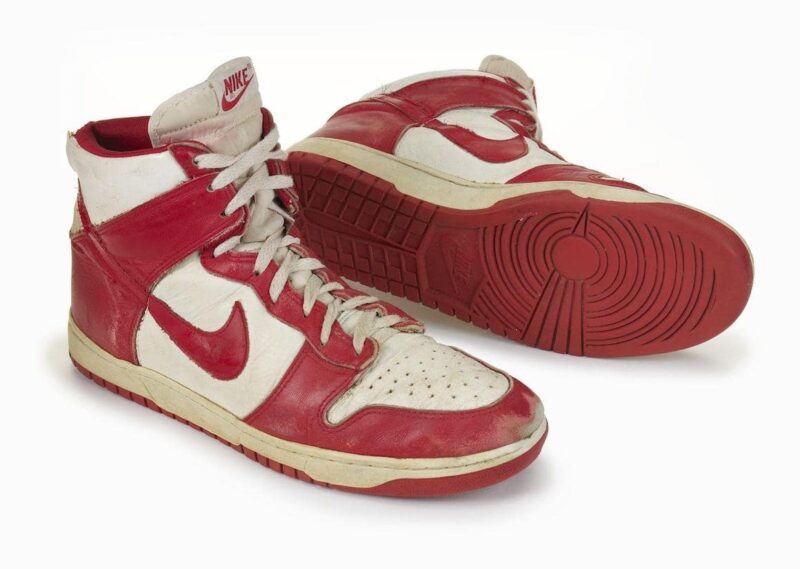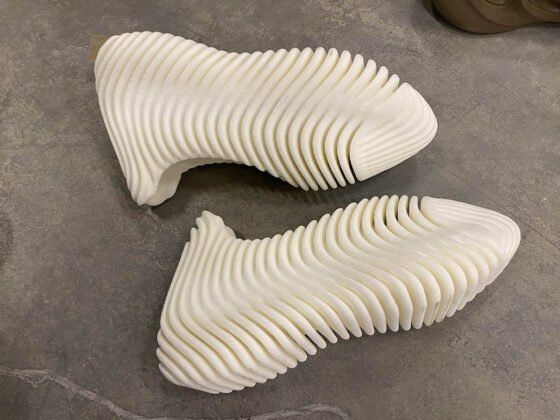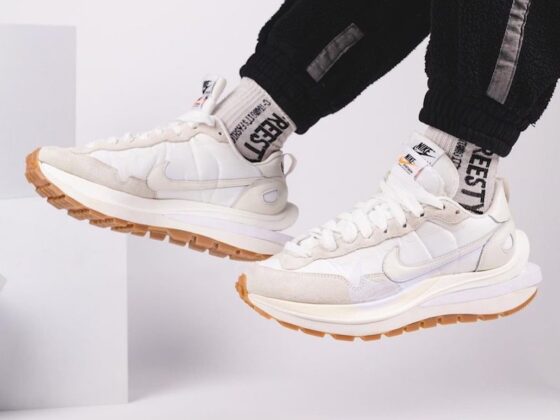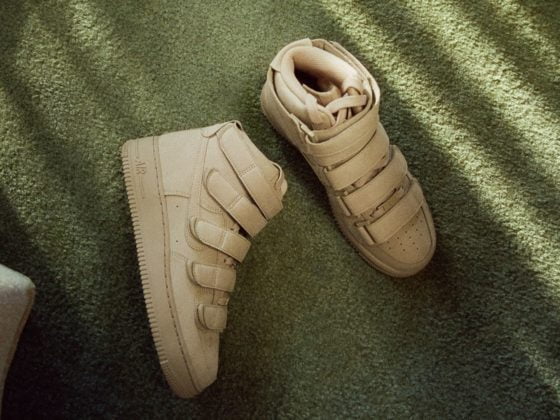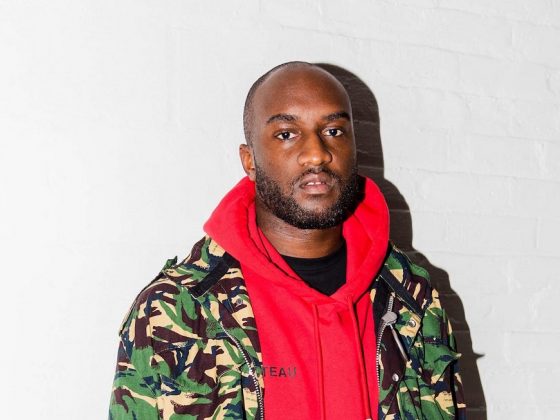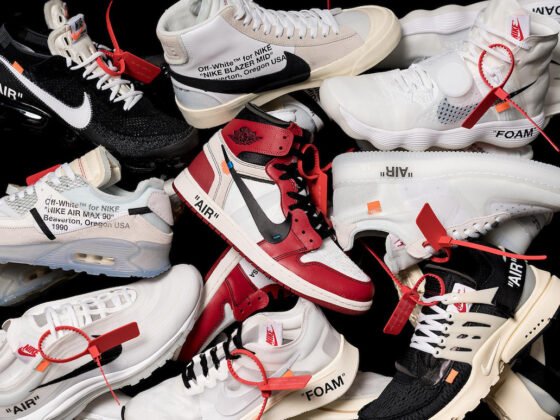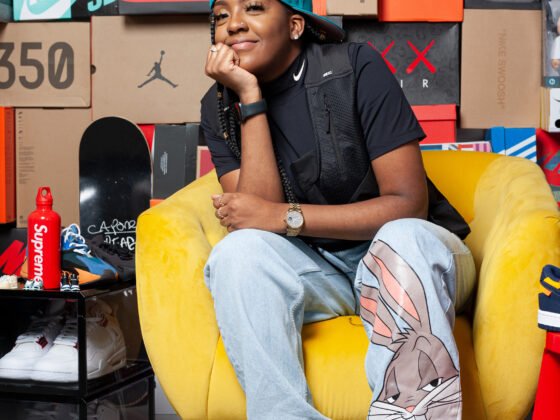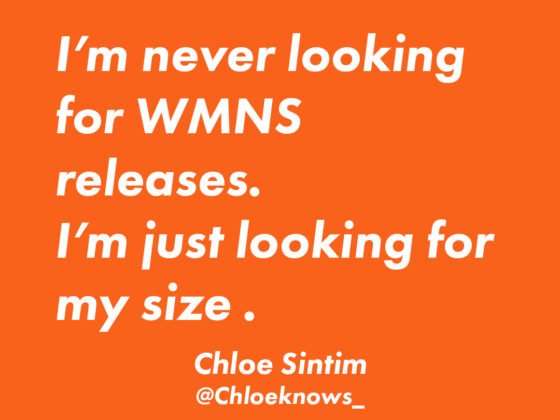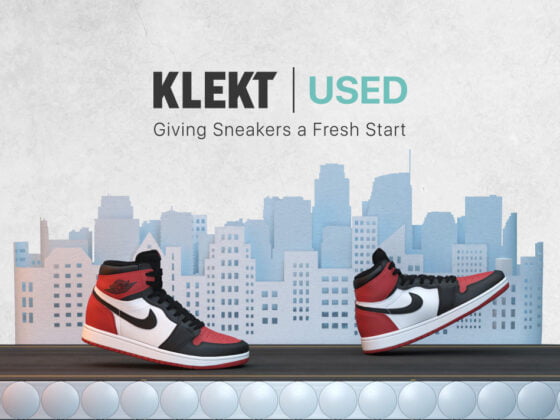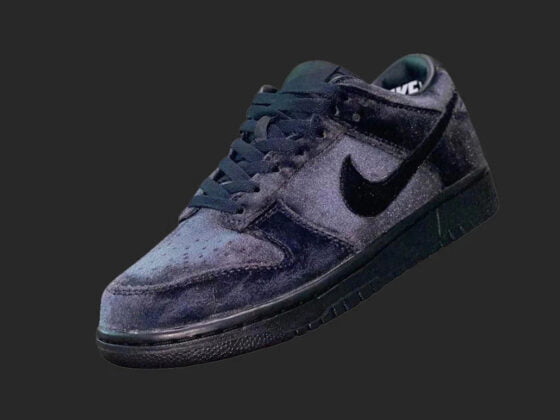The Nike Dunk is steeped in history. Since debuting in 1985, the Dunk has become a staple in almost every sneaker subculture over the past 40 years. From skateboarding to basketball and runways to dance floors, the Nike Dunk is an icon. For the better part of almost four decades, Nike Dunk shoes have permeated far further than just their initial usage on the court. With the sneaker making a resurgence over the past two years, we thought we’d give you a history of the Nike Dunk.
There is no denying just how important the Nike Dunk is from both a sneaker and cultural perspective. Although it may be finding its feet again in the sneaker community, the Dunk has not always had it easy. Whilst the likes of Travis Scott and Virgil Abloh may have reintroduced the silhouette to an entirely new generation of sneakerheads, the Dunk has had multiple spouts of popularity over the years. Now, we’ll be delving into the story behind the sneaker.
Origins
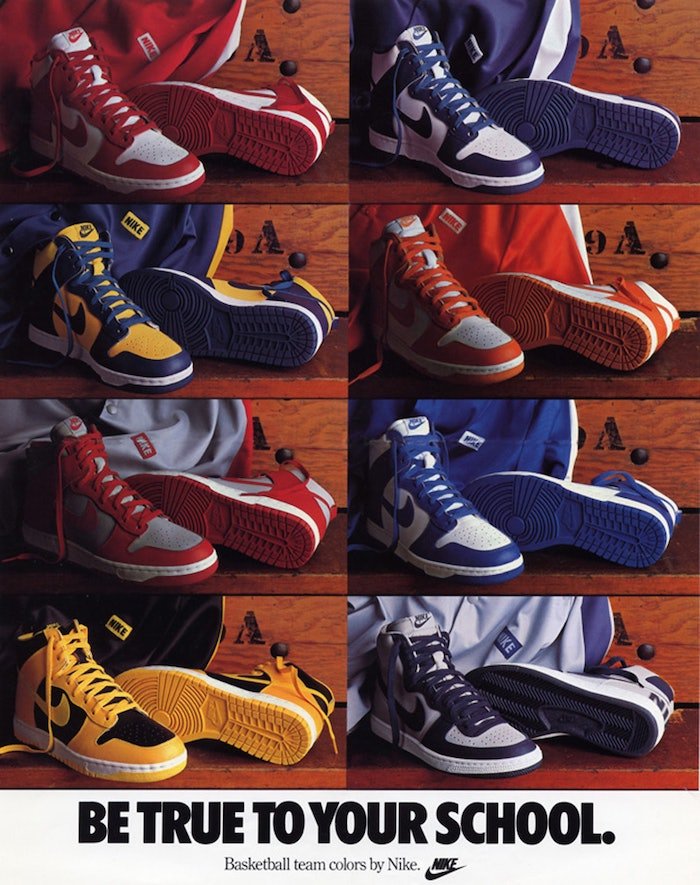
If you were ever wondering “who designed the Nike Dunk?”, then you wouldn’t have to look far. Created by Peter C. Moore, the same man that designed the Air Jordan 1, the Dunk was offered as an alternative to Michael Jordan’s signature model. Coincidentally, the 40th anniversary of the first-ever slam dunk was in 1985 which led to the name being changed at the last second. Created especially for the National College Athletic Association (NCAA), the Dunk originally released in 1985 and quickly became a hit. The reason? It drew on universities for colourway inspiration.
Seven initial colourways released designed for major colleges as part of Nike’s “Be True To Your School” campaign. The Univesity of Kentucky, University of Michigan, University of Iowa, Villanova, Syracuse, St. John’s and UNLV were chosen and the sneakers released in 1985. An eighth shoe was made for Georgetown in its colours: the Nike Terminator. With the sneakers embodying the spirit of each college, the Nike Dunks were destined for great things. Nike had quite literally slam dunked its campaign. By sponsoring the most popular college basketball teams, they had opened the fans and fellow students up to buying the sneakers.
Despite the initial success of the Nike Dunk, things were changing quickly. Although the Dunk had performed well, the rapid growth of technology at Nike meant that it soon became outdated. It was no longer the hot sneaker, with pairs like the Air Max 1, Air Jordan 3 and Air Jordan 4 all overtaking it. Soon, the Dunk would be found on sales racks and bargain bins. Although it would no longer be found on the court, the Dunk gained popularity amongst a rebellious crowd: skaters.
Early Skaters
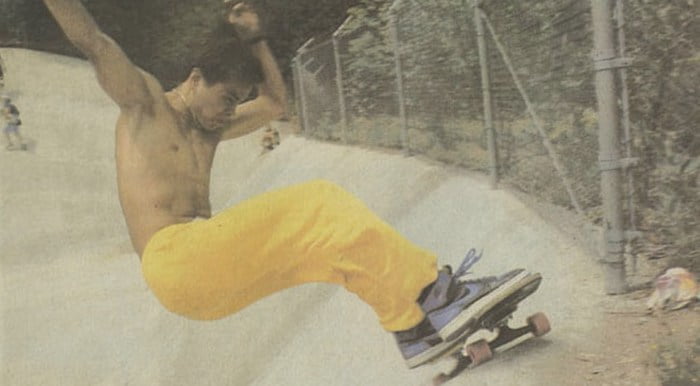
Much like the Air Jordan 1, once the Nike Dunk had become outdated for basketball fans and early sneakerheads, it found its way onto the feet of skaters. The shoes were a match made in heaven for early skaters. They provided comfort, grip and were also sturdy enough thanks to the leather. This meant the shoes could take a battering, suffering scuffs and scrapes with ease. It’s easy to see now why the Dunk was such a hit with skaters.
Early skate groups like the Z-Boys as well as up and coming figures like Stacey Peralta and Mark Gonzales and were all a fan of the Nike Dunk. Despite many key figures in the skate community wearing the Dunk, many others were not convinced. To some skaters, the idea of a corporate brand making their footwear was something they couldn’t get on board with. Although these famous skaters would wear the Dunk well into the 1990s, it would take a lot longer for Nike to get in with the skaters again.
Return of the Classics
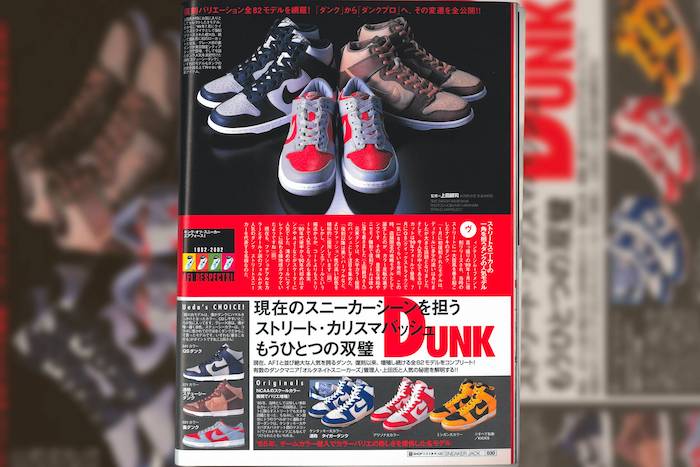
In 1999, the sneaker world was treated to something special. After a 14 year hiatus, Nike decided it was time to bring the Dunk back. This was truly Nike Dunk history. The “Be True To Your School” pack was reissued in all its glory alongside some other new additions. Despite receiving its own shoe, Georgetown never received a Nike Dunk. Nike decided it was time to change that and dropped a Nike Dunk High in the now instantly recognisable grey and navy colour scheme.
By the early 2000s, Dunk fever had well and truly started once again. With the various forums taking off in the early-2000s like NikeTalk, it was becoming apparent that the Dunk was the hot model once again. Sneakerheads from around the world also began talking to each other, learning more and more about regional-specific pairs. The introduction of the CO.JP line by Nike in 2001 brought about a string of Japanese exclusives. Soon, it became a race to see who could get the hottest Dunks from Japan and rock them first.
Arguably one of the most important moments for Nike Dunk history came in 2001. As one of the hottest brands in streetwear, Stüssy was given the opportunity to collaborate with Nike on a Dunk. It was the first time that time the Dunk had received a brand collaboration. In total, three pairs were made: two highs and one low. Although the highs were good, the lows really stole the show and put brands on the map when it came to collaborations. Enter the world of the Nike SB.
Skating 2.0
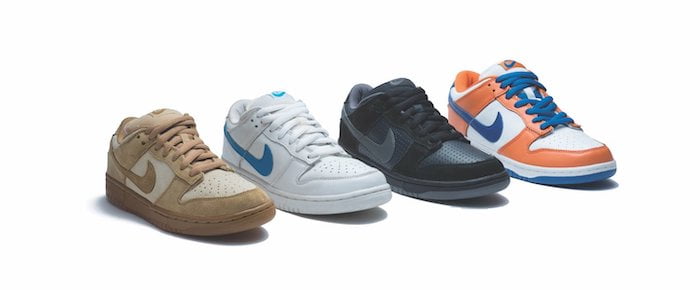
During the late 1990s, Nike also tried to enter the skateboarding scene once again. Following on from a string of attempts from 1997-1999, it was clear that Nike wasn’t going to get anywhere until it convinced skaters it wanted to design products specifically for their needs. Although Nike had tried, it had kept failing to win the skate community over. It would take three attempts before Nike would finally get it right, as well as the right man for the job.
In 2001, Nike had finally had enough of not being able to break into the world of skateboarding. The late, great Sandy Bodecker was brought in to make a success of Nike SB. The first thing that Bodecker did was visit skate shops, store owners, and talk to skaters about what they wanted from a product. Instead of trying to take away from skateboarding, Bodecker wanted to give back to it. Bodecker would go on to create what became arguably the shoe of the decade: the Nike SB Dunk.
Nike Skateboarding (or just Nike SB) was a revelation in the skate community. The introduction of the Nike SB Dunk was a landmark moment in the skate industry. Of course, the shoe was based on the classic basketball shoe but had a few key updates. A puffy tongue, wider foot radius, more durable mudguard and thicker outsole made the SB Dunk completely different.
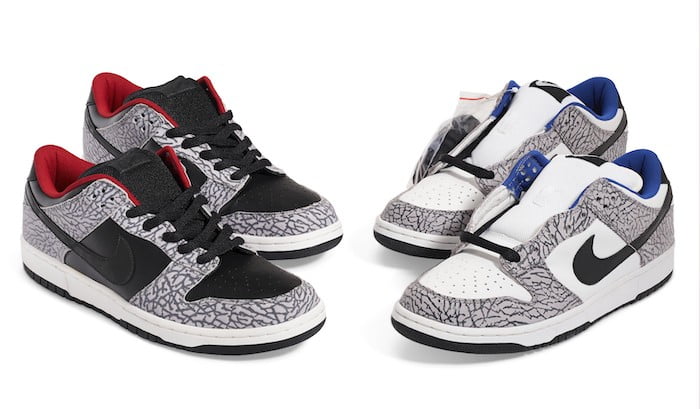
By late 2001, Nike had recruited its first four signature skaters: Danny Supa, Richard Mulder, Gino Ianucci and Reese Forbes. Each athlete was given their own signature shoe and allowed to put their spin on the new silhouette with killer results. Soon Nike SB would start branching out to skate shops and giving them the chance to work on the SB Dunk. Everyone from Chocolate to Zoo York dropped a collaborative Nike SB Dunk. However, there was one that really kickstarted the hype.
In 2002, Nike SB teamed up with a stalwart in New York’s skate scene: Supreme. As the latest skate shop to work on the SB Dunk, Supreme opted for a classic feature made famous on the Air Jordan 3 – elephant print. It was the first non-Jordan sneaker to feature elephant print and became a hit with skaters, sneaker collectors and anybody who could cop them. Limited to just 500 pairs of each colourway, the 2002 Supreme x Nike SB Dunk would open the floodgates of hype for both the Dunk and Supreme.
A Frenzy in NYC
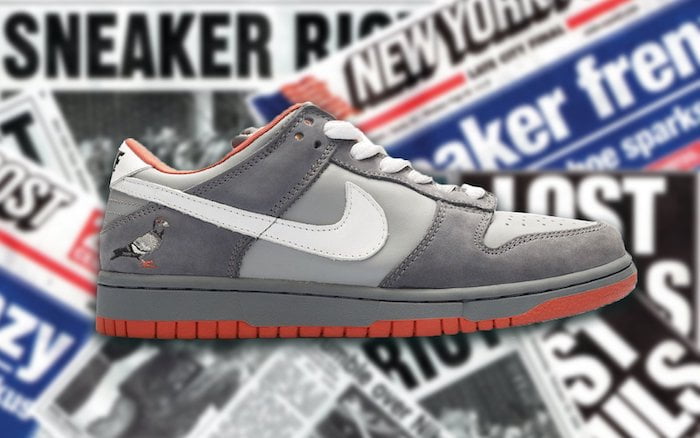
The story of Jeff Staple’s “Pigeon” Dunk is legendary in sneaker culture and for good reason. In 2005, Nike SB dropped a “City Pack”. In total, four pairs were released and reflected major cities like Tokyo, Paris, London and New York. Staple, a long-time figure in NYC’s streetwear scene, was given the opportunity to work on his own SB Dunk. In doing so, Staple would go on to create one of the most important sneakers in history.
A combination of grey suede and mesh with pink detailing made for a pretty simple Nike SB Dunk. An embroidered pigeon on the heel was the only significant point that stood out, but it caused shockwaves in the community. On the release day, hundreds of people turned up trying to get a pair of these Dunks. The situation became so crazy that the police had to be called and help control the scene. Those who were lucky enough to buy a pair had to receive a police escort to a cab in order to escape any violence.
The following day, the release of the Pigeon Dunk made front-page news. It would change the way sneaker culture was looked at forever, ultimately bringing it into the mainstream. However, things would go on a downward spiral in just a few short years.
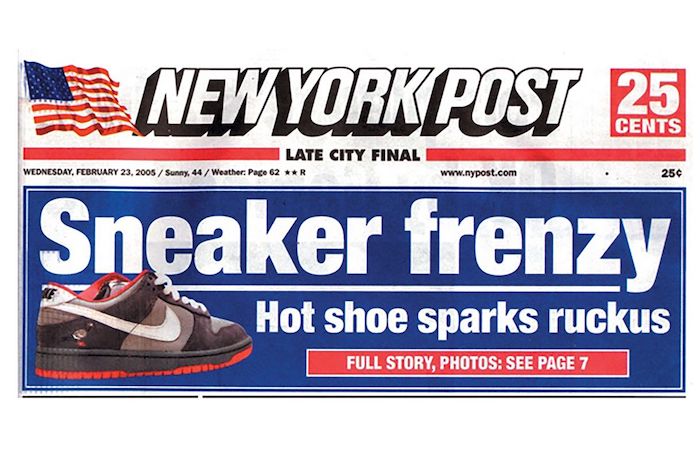
The Big Market Crash
Although things had been going well for Nike since 1999, the success would soon stop. At the turn of the new decade, it became clear that Dunks were not the hot sneaker once again. Pairs that had been selling for thousands of dollars soon became worthless. Sneaker tastes had changed meaning that the Dunk was officially out. Soon, sneakerheads began selling their entire collections trying to get new pairs that were hot at the time.
Whilst there’s no exact moment that the Nike Dunk stopped being cool, it was easy to pinpoint why they did. Much like any popular silhouette, Nike would overproduce the Dunk. From crazy colourways to outright ridiculous pairs, Nike had spoiled its success. This was nothing new, the same thing had happened to the Air Jordan 1. Things were looking dark for the Dunk once again and Nike would retire the model until things picked up.
Making a Comeback
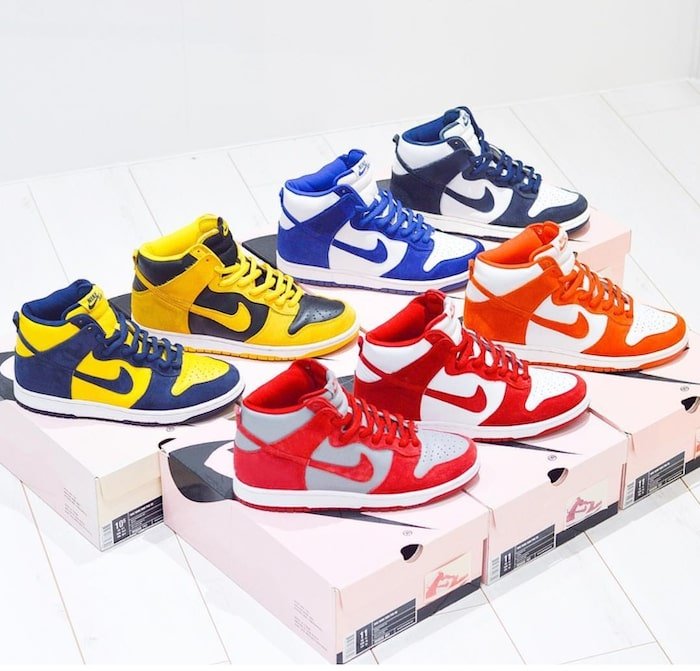
By 2015, the dust had settled enough for the original Nike Dunk High “BTTYS” pack to be reissued once again. For the 30th anniversary, it seemed only right that Nike to bring the Dunk back in all its glory. Opting for an exact recreation of the original, Nike had done the Dunk justice. Despite the shoe not performing well, it had opened the world up to the Dunk once more. So much so that in 2016, COMME des GARÇONS decided to bring the Dunk to the runway.
After the COMMES des GARÇONS x Nike Dunk High hit retailers it became a must-have for many in the fashion world. The transparent upper was completely unique and would turn the heads of key fashion designers. As the hype around the Dunk slowly started up again, Nike would start to test the waters with new colourways of the Dunk. However, it would not be until 2019 that Dunks really started making a mark in sneaker culture.
Virgil Abloh’s trio of Off-White™ x Nike Dunk Low sneakers, as well as Travis Scott’s penchant for rare SB Dunks, would start the sneaker community’s love for the Dunk once more. Over the past two years, the hype around the Dunk has only grown. From the reintroduction of OG colourways to crazy collaborations with the likes of Ben & Jerry’s, Strangelove Skateboards and Cactus Plant Flea Market to name a few. With that in mind, things are looking good for the Dunk once more.
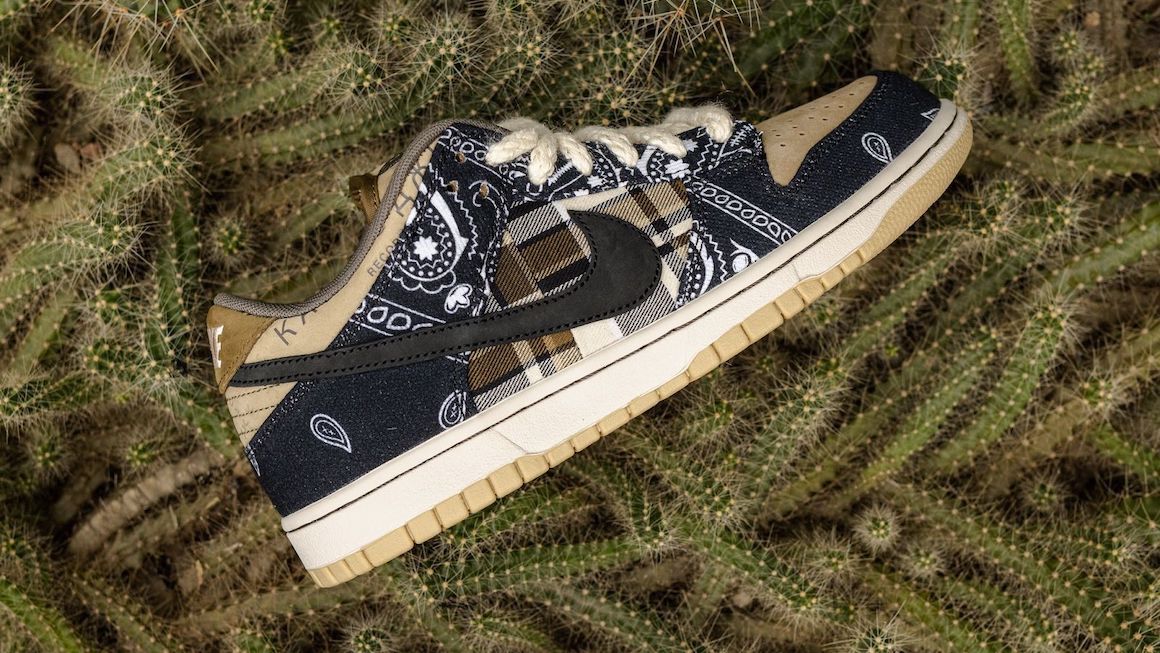
Final Thoughts
We hope you enjoyed this piece on the history of the Nike Dunk! The 1985 Nike Dunk was truly a revolutionary sneaker. Over the years, we’ve seen countless Nike Dunk colourways as well as different iterations of the classic silhouette. When it comes to the Nike SB Dunk history, the shoe is so deeply intertwined with the OG Nike Dunk that it’s hard to separate the two. All we know is that the new Nike Dunks has got many people excited. We can’t wait to see what’s to come from this truly iconic Nike sneaker this year.



